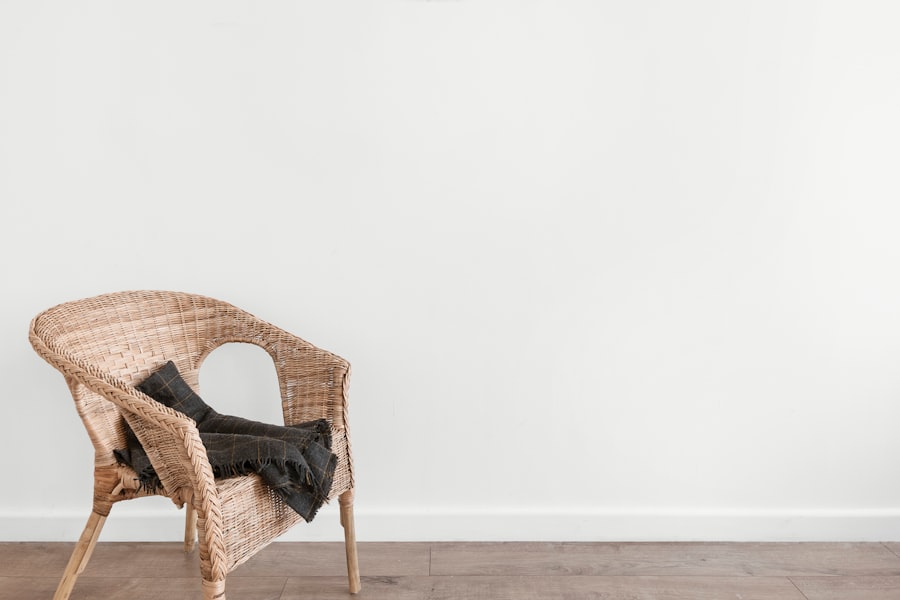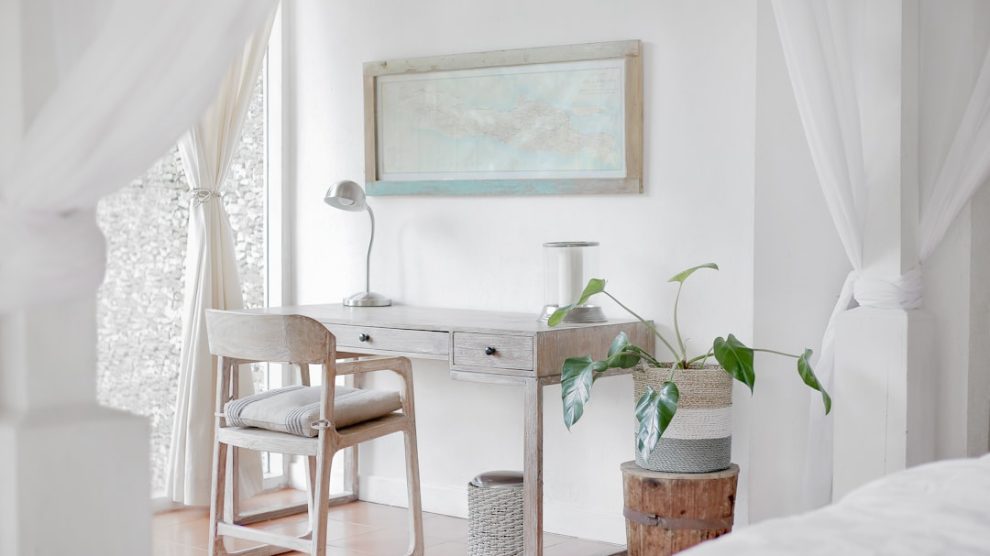Taoism, an ancient Chinese philosophy and spiritual tradition, emphasizes living in harmony with the Tao, or the fundamental nature of the universe. This philosophy is deeply rooted in the understanding of balance, natural order, and the interconnectedness of all things. Central to Taoist thought is the idea that everything in existence is part of a greater whole, and that by aligning oneself with the rhythms of nature, one can achieve a state of peace and fulfillment.
The principles of Taoism extend beyond mere philosophy; they permeate various aspects of life, including art, medicine, and, notably, design. In the realm of interior design, Taoist concepts can be harnessed to create spaces that promote well-being and tranquility. By integrating these principles into our living environments, we can cultivate a sense of harmony that resonates with our inner selves.
This approach not only enhances aesthetic appeal but also fosters a deeper connection to the natural world and our own personal experiences. As we explore the various elements of Taoist-inspired design, we will uncover how these ancient teachings can be applied to modern living spaces, transforming them into sanctuaries of peace and balance.
Key Takeaways
- Taoist concepts emphasize harmony and balance in all aspects of life, including interior design.
- Embracing natural elements and minimalism are key principles in Taoist-inspired interior design.
- Feng Shui and energy flow play a significant role in creating a harmonious living space according to Taoist beliefs.
- Functionality is prioritized in Taoist-inspired interior design, focusing on practicality and purpose.
- Incorporating mindfulness and tranquility into the living space is essential for creating a Taoist-inspired environment.
Harmony and Balance in Interior Design
The Power of Color Harmony
For instance, a room that features a harmonious color palette can evoke feelings of calmness and serenity, while contrasting colors may create tension and unease.
Balance in Furniture Arrangement
Balance in design can also be achieved through the careful arrangement of furniture and decor. In a Taoist-inspired space, furniture should be positioned to facilitate movement and flow, allowing occupants to navigate the area effortlessly. This might involve placing larger pieces in a way that does not obstruct pathways or creating zones for different activities that encourage interaction and relaxation.
Creating Inviting Environments
By prioritizing balance in both aesthetics and functionality, designers can create environments that not only look appealing but also feel inviting and nurturing.
Embracing Natural Elements

Taoism places a strong emphasis on the natural world, viewing it as a source of inspiration and wisdom. In interior design, this translates into the incorporation of natural elements that reflect the beauty and tranquility of the outdoors. Materials such as wood, stone, and bamboo are often favored for their organic qualities and ability to connect indoor spaces with nature.
For example, wooden furniture can bring warmth and texture to a room, while stone accents can evoke a sense of grounding and stability. In addition to materials, incorporating plants into interior spaces is a powerful way to embrace nature. Plants not only enhance air quality but also contribute to a sense of vitality and growth within a home.
The presence of greenery can soften harsh lines and add life to otherwise sterile environments. Designers might choose to create indoor gardens or use potted plants strategically throughout a space to foster a connection with the natural world. By embracing these elements, interior design can reflect the Taoist belief in the importance of living in harmony with nature.
Minimalism and Simplicity
Simplicity is a core tenet of Taoist philosophy, advocating for a life free from excess and distraction. In interior design, this principle manifests as minimalism—a design approach that emphasizes clean lines, uncluttered spaces, and functional furnishings. A minimalist space allows for greater focus on essential elements, promoting clarity and peace of mind.
By stripping away unnecessary items and decorations, designers can create environments that feel open and inviting. The practice of minimalism also encourages individuals to be more intentional about their possessions. Each item within a space should serve a purpose or bring joy; otherwise, it may contribute to feelings of chaos or overwhelm.
This aligns with the Taoist belief in simplicity as a pathway to contentment. For instance, a well-designed minimalist living room might feature only a few carefully chosen pieces of furniture—perhaps a low-profile sofa paired with a simple coffee table—allowing for an atmosphere that feels both spacious and serene. By embracing minimalism in design, individuals can cultivate environments that reflect their values and promote mindfulness.
Feng Shui and Energy Flow
Feng Shui, an ancient Chinese practice closely related to Taoism, focuses on the arrangement of space to promote positive energy flow or “chi.” This practice is rooted in the belief that our surroundings significantly impact our well-being and that by optimizing our environments, we can enhance our lives. In interior design, applying Feng Shui principles involves considering factors such as layout, orientation, and the placement of furniture to create harmonious energy flow. For example, in Feng Shui, it is often recommended to position furniture in a way that allows for easy movement throughout a space while avoiding sharp corners or obstacles that may disrupt energy flow.
The placement of mirrors is also significant; they can be used strategically to reflect light or energy back into a room while avoiding reflections that may create discomfort or unease. By thoughtfully arranging spaces according to Feng Shui principles, designers can create environments that not only look aesthetically pleasing but also foster positive energy and well-being.
Emphasis on Functionality

In Taoist philosophy, functionality is paramount; every element should serve a purpose that contributes to overall harmony. This principle is particularly relevant in interior design, where functionality must be balanced with aesthetics to create spaces that are both beautiful and practical. A well-designed space should cater to the needs of its occupants while promoting ease of use and comfort.
For instance, in a kitchen designed with functionality in mind, the layout might prioritize workflow efficiency by placing appliances within easy reach of one another. This not only enhances usability but also creates an environment where cooking becomes an enjoyable experience rather than a chore. Similarly, in living areas, furniture should be arranged to facilitate conversation and interaction among occupants.
By emphasizing functionality alongside aesthetic considerations, designers can create spaces that truly serve their inhabitants’ needs while embodying the principles of Taoism.
Incorporating Mindfulness and Tranquility
Mindfulness—a practice rooted in being present and fully engaged in the moment—aligns closely with Taoist teachings on awareness and connection to one’s surroundings. In interior design, creating spaces that promote mindfulness involves incorporating elements that encourage relaxation and reflection. Soft lighting, calming colors, and comfortable seating arrangements can all contribute to an atmosphere conducive to mindfulness practices such as meditation or quiet contemplation.
Incorporating tranquil spaces within a home can take many forms; for example, a designated reading nook with plush cushions and natural light can serve as an inviting retreat for relaxation. Water features such as small fountains or aquariums can also enhance tranquility by introducing soothing sounds and visual elements reminiscent of nature. By designing spaces that prioritize mindfulness and tranquility, individuals can cultivate environments that support their mental well-being and foster deeper connections with themselves and their surroundings.
Creating a Taoist-inspired Living Space
Designing a living space inspired by Taoist principles involves weaving together concepts such as harmony, balance, natural elements, minimalism, Feng Shui, functionality, mindfulness, and tranquility. Each element plays a crucial role in creating an environment that resonates with the essence of Taoism—one that promotes well-being and fosters a deep connection with nature and oneself. By thoughtfully integrating these principles into our homes, we can transform our living spaces into sanctuaries that reflect our values while enhancing our quality of life.
As we navigate the complexities of modern living, embracing Taoist-inspired design offers us an opportunity to reconnect with simplicity and balance amidst the chaos. Whether through the careful selection of materials or the intentional arrangement of furniture, each choice contributes to an overall sense of peace and harmony within our homes. Ultimately, creating a Taoist-inspired living space is not merely about aesthetics; it is about cultivating an environment that nurtures our spirit and supports our journey toward inner tranquility.
FAQs
What are Taoist concepts in interior design?
Taoist concepts in interior design are based on the principles of harmony, balance, and simplicity. They emphasize the use of natural materials, minimalism, and creating a sense of flow and tranquility within a space.
How can Taoist concepts be applied to modern interior design?
Taoist concepts can be applied to modern interior design by incorporating natural elements such as wood, stone, and plants, using a neutral color palette, decluttering and organizing spaces, and creating a sense of openness and connection to nature.
What are the benefits of applying Taoist concepts to interior design?
Applying Taoist concepts to interior design can create a sense of calm and serenity within a space, promote a feeling of balance and harmony, and contribute to overall well-being and relaxation for the occupants.
Are there specific design elements that are commonly used in Taoist-inspired interior design?
Common design elements used in Taoist-inspired interior design include natural materials such as bamboo, rattan, and silk, as well as incorporating feng shui principles to optimize the flow of energy within a space.
Can Taoist-inspired interior design be adapted to different types of spaces?
Yes, Taoist-inspired interior design can be adapted to various types of spaces, including homes, offices, and commercial establishments. The principles of harmony, balance, and simplicity can be applied to create a peaceful and inviting environment in any setting.









Add Comment